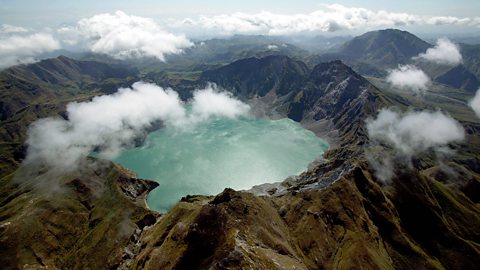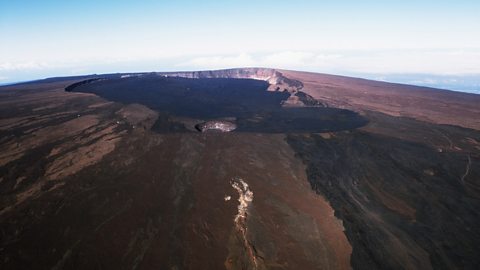Types of volcano - composite and shield
There are two main types of volcano - composite and shield. The two types of volcano form in different places and have very different characteristics.
Composite volcanoes
Composite volcanoes are found on convergent plate boundaryWhen two tectonic plates move towards each other and collide., where the oceanic crust subductionWhen one crustal plate is forced beneath the other. beneath the continental crust. Composite volcanoes have the following characteristics:
- Andesitic magma, which is lower in temperature, has more silica and a lot of dissolved gases and is more likely to explode when it reaches the surface.
- Acidic lava, which is very viscous (sticky).
- Steep sides as the lava doesn't flow very far before it solidifies.
- Alternate layers of ash and lava. For this reason, they're also known as stratovolcanoA volcano made up of alternate layers of ash and lava.. Strato means layers.
- Violent eruptions.
- Longer periods between eruptions.

An example of a composite volcano is Mount Pinatubo in the Philippines
Shield volcanoes
Shield volcanoes are found on divergent plate boundaryAn area where two tectonic plates are moving away from one another., where two plates move away from one another. Shield volcanoes have the following characteristics:
- basaltic magma, which is high in temperature, very low on silica and with low gas content - this type of magma produces fluid lava with very little explosive activity
- basic lava, which is non-acidic and very runny
- gentle sides as the lava flows for long distances before it solidifies
- no layers, as the volcano just consists of lava
- less violent eruptions
- shorter periods between eruptions

Mauna Loa is a shield volcano, but was formed over a hotspot, rather than at a divergent plate boundary